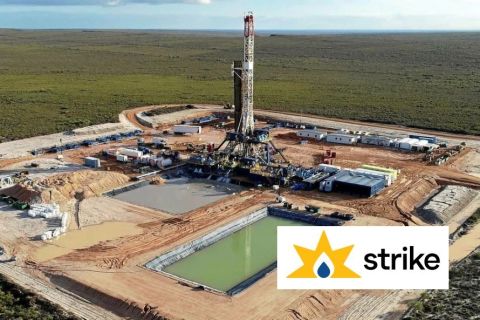Critical natural gas facilities that fuel Texas power plants face an impending Dec. 1 deadline to implement weatherization upgrades following the record 2021 winter freeze.
The February 2021 winter storm, dubbed Uri, left millions without power and resulted in hundreds of deaths. There were failures ranging from the pipelines and processing facilities to the power plants and transmission.
Taylor Holcomb, environmental and regulatory lawyer at Jackson Walker, discusses the new weatherization rules from the Texas Railroad Commission and the challenges facing natural gas operators.

What types of natural gas facilities are required to weatherize by Dec. 1?
The weatherization standards only apply to gas supply facilities – including producing wells, gas pipelines, gas processing plants, and gas storage and disposal facilities—that are on Texas’ electricity supply chain map. These facilities comprise the chain of operations supplying fuel for power plants that produce electricity for Texas customers. In early October, the Railroad Commission notified operators which facilities are on the electricity supply chain map. This map is updated at least once a year, so the facilities involved may periodically change.
Specifically, what are these gas facility operators supposed to complete by the deadline?
Those covered must certify that critical, weather-exposed components have been weatherized. To make that certification, an operator must implement a three-step compliance program. One, correct operational failures that occurred during previous weather emergencies. Two, install equipment to mitigate weather-related operational risks. And, three, inspect and implement processes, including the training of employees, to identify, test, and protect critical, weather-exposed components.
How tough is it to meet that deadline?
Dec. 1 is approaching fast, and meeting the deadline has been made more difficult by the fact that the Railroad Commission was still in the process of notifying operators in early October which facilities are on the electricity supply chain map and, therefore, must weatherize. That said, the operators that Jackson Walker lawyers have been advising have been proactive in preparing to comply, so I expect most will be able to make the Dec. 1 certification.
What are some of the concerns operators have raised?
The operators I work with have raised two principal concerns: First, how to be best positioned to comply by the rapidly approaching Dec. 1 deadline. And, second, how to select appropriate weatherization methods for each unique facility that is on the electricity supply chain map.
Are facilities able to choose their own weatherization methods, and what does that mean regarding inspections?
Again, an operator must implement a three-step compliance program, with the second step requiring installation of equipment to mitigate weather-related operational risks. With respect to that step, the Railroad Commission did not prescribe which weatherization methods an operator must choose. That’s appropriate because weatherization methods should vary based on the type, age and location of facility. Instead, the Railroad Commission published weatherization best practices to guide operators in their choices. Operators will be best positioned to demonstrate compliance if they have clearly documented how they are implementing each step in the three-step compliance program.
Could you give a couple of examples of weatherization methods to illustrate how those vary by facility?
Take heat tracing, for example, which is used to prevent the freezing of equipment. According to the Railroad Commission’s weatherization best practices document, operators of those facilities should consider using electric tracing, steam tracing, or glycol-heating systems to help maintain a minimum temperature within critical, weather-exposed process equipment, with the operator’s selection dependent on the type, age and location of the facility.
What are the operators’ liabilities if their weatherization fails amid another extreme weather event?
The Texas Legislature empowered the Railroad Commission and Attorney General to assess up to $1 million in penalties for violations of the weatherization standards. But penalty assessments will vary depending on the type of facility, actual hazards to the public created by noncompliance, the operator’s efforts to fix noncompliance issues, and the total amount of time out of compliance.
Recommended Reading
US Drillers Add Oil, Gas Rigs for First Time in Five Weeks
2024-04-19 - The oil and gas rig count, an early indicator of future output, rose by two to 619 in the week to April 19.
Strike Energy Updates 3D Seismic Acquisition in Perth Basin
2024-04-19 - Strike Energy completed its 3D seismic acquisition of Ocean Hill on schedule and under budget, the company said.
Santos’ Pikka Phase 1 in Alaska to Deliver First Oil by 2026
2024-04-18 - Australia's Santos expects first oil to flow from the 80,000 bbl/d Pikka Phase 1 project in Alaska by 2026, diversifying Santos' portfolio and reducing geographic concentration risk.
Iraq to Seek Bids for Oil, Gas Contracts April 27
2024-04-18 - Iraq will auction 30 new oil and gas projects in two licensing rounds distributed across the country.
Vår Energi Hits Oil with Ringhorne North
2024-04-17 - Vår Energi’s North Sea discovery de-risks drilling prospects in the area and could be tied back to Balder area infrastructure.



